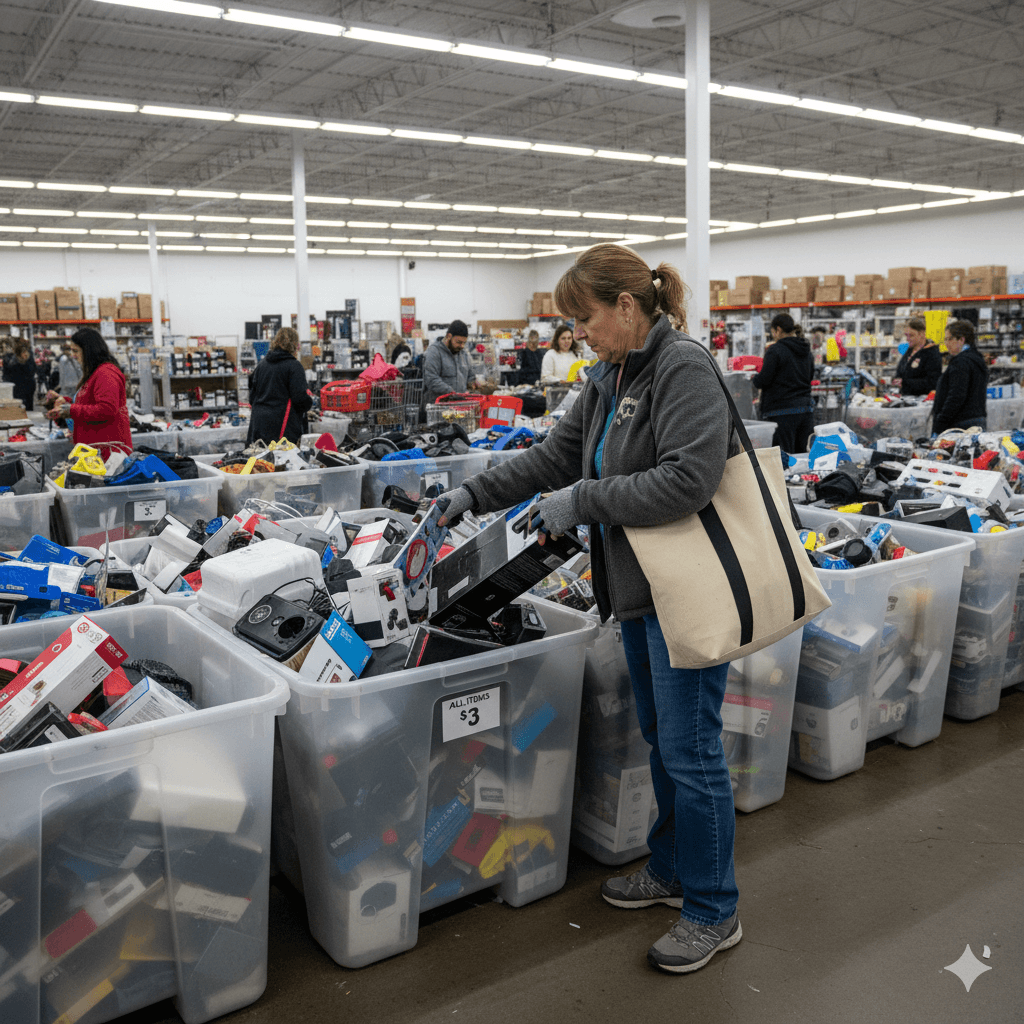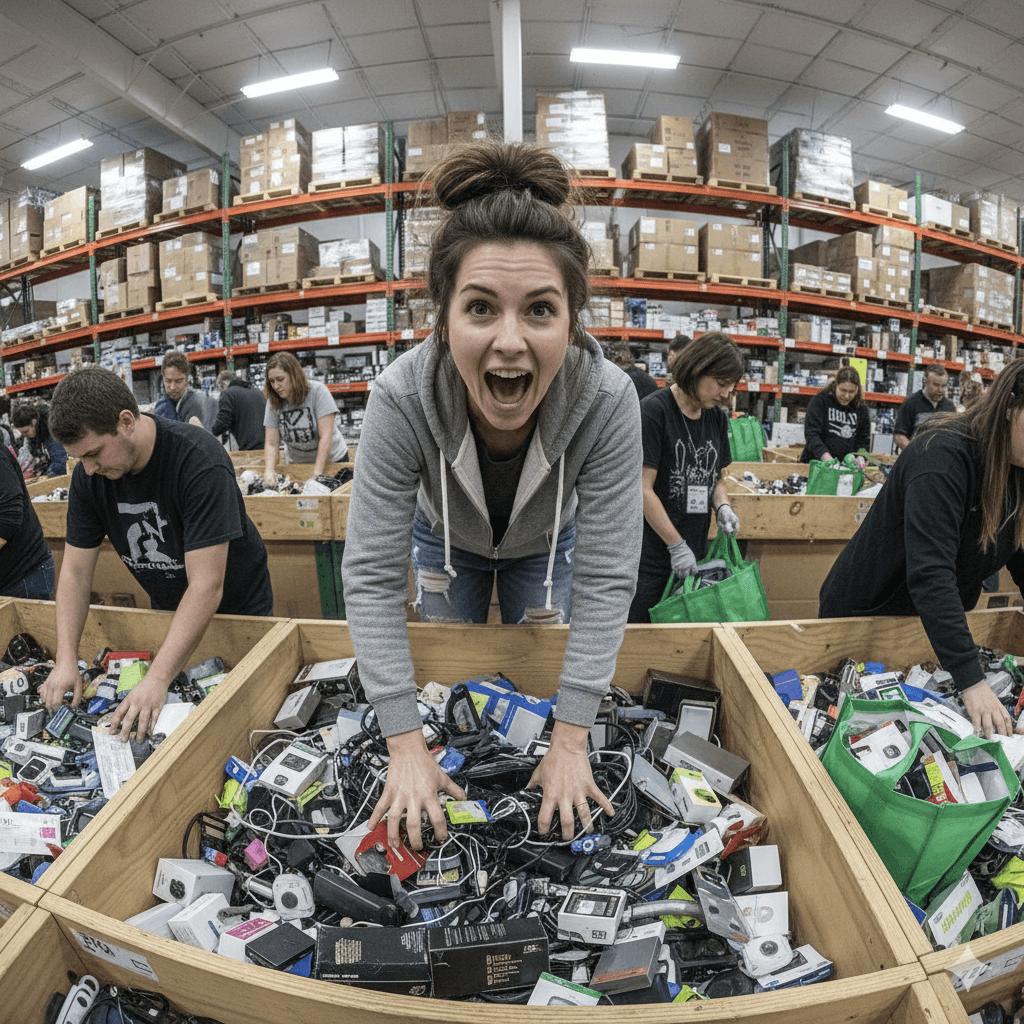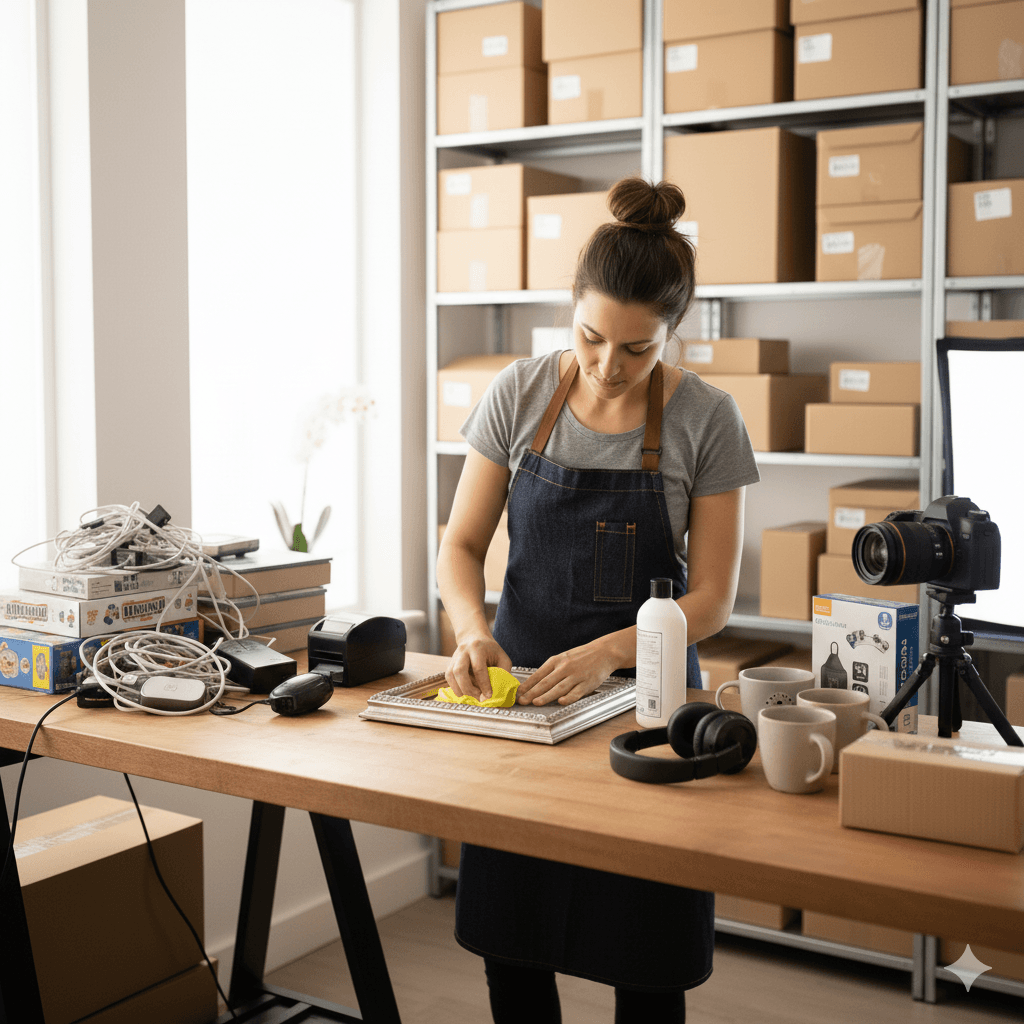Intro
The liquidation bin store is not your average shopping trip—it's an exhilarating, often competitive, adrenaline-fueled treasure hunt. These stores, where major retailer returns and overstock are dumped into massive bins and sold at a steep, often descending, discount, offer the chance to snag $500 electronics for $5.
But the bins are chaos by design. Without a strategy, you’re just digging for trash. To consistently walk away with gold—whether for personal use or to fuel your reselling business—you need a professional game plan.
Here are 10 indispensable tips and strategies to master the art of the bin store and ensure you find the deepest deals every time.
1. Do Your Homework: Know the Pricing Schedule and Drop Times
Every successful bin store operates on a set schedule: a "New Item Day" (the most expensive day), followed by progressive daily price drops until the next restock.
The Golden Rule: You must decide if you prioritize Value or Deals.
- Value Shopper (Tuesday/Wednesday): Go on the first few days when the bins are freshly stocked. The prices are higher (e.g., all items $15 or $10), but the likelihood of finding high-value, intact electronics, name-brand apparel, and complete sets is highest.
- Deal Hunter (Friday/Saturday): Go on the last days when prices drop dramatically (e.g., all items $1 or $0.25). The bins are heavily picked over, but you can find small, high-margin consumables or parts for almost nothing.
Action: Check your local bin store's website (which you can easily find using the search function on the https://www.findaliquidationstore.com/ homepage) and commit their schedule to memory. Arrive at least 30–60 minutes before the store opens on your chosen day.
2. Come Prepared: Your Bin Store Survival Kit
Bin shopping is messy, physical labor, often involving digging through thousands of items that may be dirty, broken, or sticky. Preparation is non-negotiable.
| Item | Purpose |
|---|---|
| Work Gloves | Protection from sharp objects, broken glass, and general grime. |
| Small Measuring Tape | Quickly check if an item (like a clothing rack or shelf) will fit your space. |
| Blacklight Flashlight | Essential for detecting certain stains on textiles or verifying certain collectibles. |
| Phone with Battery Pack | Crucial for instant price checks and battery life for the long haul. |
| A "Holding" Bag (IKEA Bag or similar) | Carts fill up fast; a large, durable bag allows you to transfer items and keep them covered. |
3. The 3-Second Rule: Inspect, Don't Hesitate
When the new bins drop, it’s a controlled chaos known as the "bin rush." In the first 10 minutes, decision-making time is limited.
- Scan for Shape and Weight: Look for large, heavy boxes, or distinct shapes that indicate electronics, large toys, or tools.
- Grab First, Inspect Later: If you spot an item that looks high-value (e.g., a branded box, a sealed bag), physically secure it by placing it in your cart or bag immediately. Do not stand at the bin inspecting it while someone else scoops up the item next to you.
- Sort in a Safe Zone: Once your cart is full or the initial rush subsides, move to a designated sorting area *away* from the bins to check the condition (Tip 8).
4. Reverse Engineer the Deal: Focus on Retail Price (Not Bin Price)
The price you pay at the bin store is irrelevant if you don't know the item's true value. This is the difference between a good shopping trip and a profitable one.
- Instant Lookup: Use retailer apps on your phone to scan bar codes or quickly search product names.
- Focus on the MSRP: If an item is selling for $70 retail and you can get it for $5 in the bin, that’s a $65 *potential* savings or profit, regardless of what the adjacent item is priced at.
- Search "Sold Listings": If you plan to resell, checking "Sold Listings" on platforms like eBay is vital. What people *ask* for an item is different from what people *pay* for it.
5. Dig Smart: Target the Corners and the Bottom
The vast majority of shoppers grab the easy-to-reach items on the surface. True gems are often overlooked, especially when the bins are crowded.
- The Corner Secret: Items get kicked into the corners during the initial frenzy. These spots are often neglected and can hide high-value goods that were pushed out of sight.
- The Deep Dive: Use your hands and arms (protected by gloves!) to sift all the way to the bottom. Heavy or small items tend to settle there.
- Avoid the Center: The middle of the bin is the most contested area and is usually depleted fastest. Start on the periphery and work your way in.
6. Maximize Small, Consumable Items
One large electronic item can make your trip, but small consumables provide steady, reliable profit and savings.
- Look for Multi-Packs: Target new, sealed items like toothbrush heads, printer ink cartridges, coffee pods, cosmetic gift sets, or high-end office supplies.
- Bulk-Out the Cart: These small, high-turnover items are easy to list online as "lots" and sell quickly, ensuring you don't walk away empty-handed.
- Essentials: The bins are excellent places to stock up on basic household needs like cleaning wipes or quality pet supplies for deep personal savings.
7. Embrace the Power of the Bundle (The Missing Piece Strategy)
Many items in the bins are missing a single, crucial component (a power cord, a remote, a manual).
- The Bundle Strategy: If you find a quality item missing a part, immediately search surrounding bins for that specific component. Resellers call this "marrying" the item.
- Buying Components: If you can't find the part, check to see how much a replacement cord or remote costs online. If the replacement cost is low, you can still buy the main item, purchase the part, and sell the complete unit for a high margin.
8. Establish a "Checkout" Sorting Station
Never roll a cart full of unchecked items to the cash register. You will regret buying the stained, broken, or incomplete junk when you get home.
- The Sorting Break: After 45 minutes to an hour of digging, move your cart to a quiet, wall-side area. This is your personal quality control station.
- Checklist for Every Item:
- Is it intact? (No cracks, no major missing pieces).
- Does it power on/work? (If it uses batteries, use your phone battery to test).
- Is the profit margin acceptable? (Confirm the selling price one last time).
- Is it too damaged to sell? (Place back neatly if it’s a “no.”)
9. Wear the Right Uniform: Practicality Over Fashion
Your attire matters, both for comfort and for fitting the environment.
- Comfortable Shoes: You will be standing and walking on a concrete floor for hours. Wear supportive, closed-toe shoes (no sandals!).
- Layered Clothing: Bin stores are often large, drafty warehouses where temperatures fluctuate. Dress in layers you can easily shed or put on.
- Crossbody Bag/Fanny Pack: Keep your wallet, keys, and phone secure and close to your body. Leaving a regular purse in a cart is risky in a crowded environment.
10. Stay Local and Make Friends (Not Enemies)
While the bin experience can be competitive, establishing good local etiquette and finding new locations is key to long-term success.
- Be Polite, Stand Firm: Don't engage in pushing or arguing. If someone is aggressive, move to another bin. But also, don't let others pressure you into giving up your spot if you are actively digging. A simple "Ope, sorry!" and a calm demeanor go a long way.
- Expand Your Hunting Grounds: The best way to get exclusive inventory is to find new stores. Use the homepage search function at https://www.findaliquidationstore.com/ to search for "bin stores" or "liquidation outlets" near you in neighboring towns—less competition often means better finds.
Ready to put these tips to the test?
Mastering the bins takes practice, but by applying these 10 tips, you transform the chaotic environment into a streamlined system for high-profit, deep-discount sourcing. Now get out there and find those treasures!



